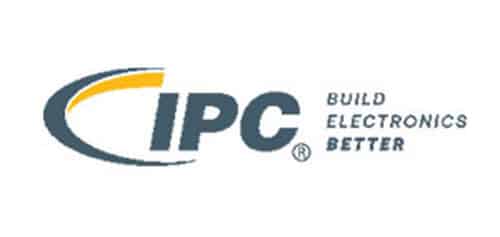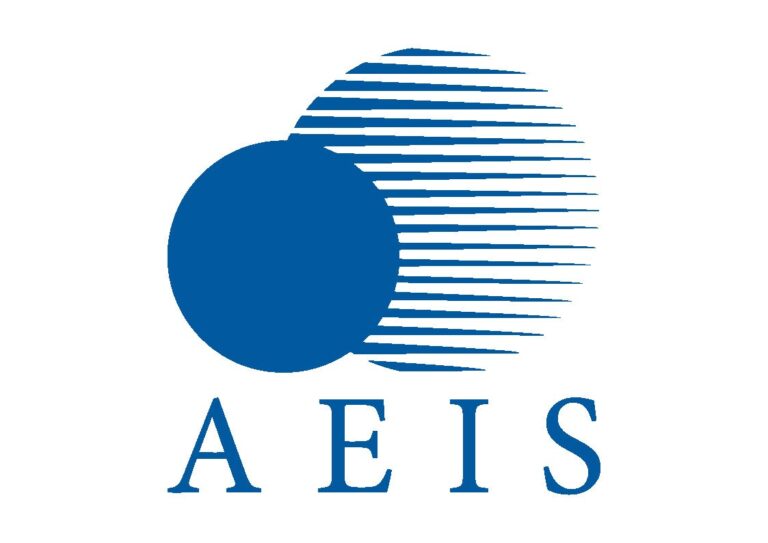Embarking on a path of remarkable growth, India envisions a significant position in the global semiconductor industry. With a booming economy and a population projected to reach 1.7 billion, the country stands as one of the most substantial and rapidly expanding semiconductor markets worldwide. However, this ambitious journey is not without its anticipated challenges.
As India strives to reduce import dependency and fortify its semiconductor ecosystem, it faces obstacles like the lack of essential infrastructure, the need to establish a robust supply chain, and secure raw-materials sourcing agreements with other countries. Moreover, navigating the competitive landscape of established Asian semiconductor hubs poses yet another significant challenge.
Despite these hurdles, the government and private companies join hands to bolster India’s semiconductor prowess. Strategic initiatives, financial incentives, and collaborations with international partners are driving the country’s progress in this critical sector.
In an exclusive conversation with Anil Kempanna, CEO, Cientra, we delve into the anticipated challenges that India must overcome to secure its place in the semiconductor landscape. We also explore the government’s efforts and private sector contributions, emphasizing the potential investment opportunities and the prospects that lie ahead. Join us as we uncover India’s semiconductor odyssey, where innovation, collaboration, and determination pave the way to success on the global stage.
What are the anticipated challenges in India’s journey towards establishing a prominent position in the semiconductor industry?
India’s journey towards establishing a prominent position in the semiconductor industry anticipates several challenges. These include the lack of adequate infrastructure, such as fabs, test and assembly facilities, and research and development centers. Additionally, there is a need to establish a robust supply chain capable of mitigating disruptions and secure agreements with countries for reliable raw-materials sourcing. Overcoming these challenges will require strategic planning, substantial investments, and collaborative efforts between the government, industry stakeholders, and international partners to enhance India’s competitiveness in the global semiconductor market.
How does India’s semiconductor industry compare to other major global players in terms of positioning and competitiveness?
India’s foray into the semiconductor industry is marked by several critical considerations. Firstly, the country’s burgeoning economy, with a growth rate of 6-7% and a population projected to reach 1.7 billion, creates a substantial and fast-growing market for advanced electronic and technological products. However, India’s heavy reliance on semiconductor imports exposes it to supply chain disruptions and trade complexities.
To address this vulnerability, it is essential to strengthen domestic semiconductor manufacturing capabilities. Policymakers must enact supportive measures, including financial incentives and regulatory reforms, to attract private sector investments in this sector. Moreover, India needs to focus on developing a skilled workforce proficient in semiconductor design, manufacturing, and research. Strategic partnerships with other countries like Taiwan, the US, Korea, Germany, and France can expedite skill development and availability.
In the face of fierce competition from well-established Asian semiconductor manufacturing hubs, India must craft astute strategies to carve a unique niche in the global market. While the government has initiated measures to bolster the semiconductor ecosystem, sustained efforts are necessary to achieve self-sufficiency.
Streamlining export-import policies is another imperative, ensuring ease of doing business with other countries and vice versa. By addressing these challenges through a comprehensive and collaborative approach, India can position itself competitively and establish a significant presence in the semiconductor industry.
Can India achieve its vision of developing a domestically produced semiconductor chip by 2024? How can companies overcome barriers to support this goal?
India has unveiled its ambitious vision of developing a domestically produced semiconductor chip, aiming to fortify its electronics and semiconductor industry. Nevertheless, attaining this remarkable objective by 2024 entails overcoming several momentous challenges.
The development of a semiconductor chip involves intricate processes, state-of-the-art technologies, and substantial investments in research and development. Some of the impediments India might encounter in accomplishing this vision by 2024 encompass:
- Technological Proficiency: Creating a semiconductor chip demands expertise in design, fabrication, packaging, and testing. While India has been making noteworthy progress in the electronics and IT sectors, acquiring the requisite technical know-how for chip manufacturing will be time-consuming.
- Infrastructure and Manufacturing Excellence: Establishing semiconductor fabrication facilities (fabs) with cutting-edge manufacturing processes demands considerable investment and time. Constructing the necessary infrastructure and capabilities to compete with established global players presents a formidable undertaking. Just as an example, fabs like TSMC, Intel, GF and Samsung have taken multi-decades to build up their expertise in Semi-conductor manufacturing.
- Intellectual Property and Technology Transfer: Gaining access to advanced semiconductor technologies and intellectual property could prove challenging. Collaborating with international partners for technology transfer might become necessary, entailing the navigation of complex legal and business arrangements.
- Supply Chain and Raw Materials: The semiconductor industry heavily relies on a global supply chain for raw materials and equipment. Ensuring a stable and secure supply chain for these crucial components can be a daunting task.
- Time Constraints: Developing a semiconductor chip from scratch is a time-consuming process, typically involving years of research, prototyping, testing, and refining. Achieving this goal within a few years poses a significant challenge.
- Despite these hurdles, it is vital to acknowledge that India has been diligently working to fortify its semiconductor and electronics industry. The government has introduced various initiatives and incentives to promote domestic manufacturing, attract investments, and support research and development in the electronics sector.
- While achieving a fully domestically produced semiconductor chip by 2024 might prove challenging, India’s progress in establishing its semiconductor ecosystem and enhancing its electronics manufacturing capabilities can lay the groundwork for future advancements in the field. Continual efforts, strategic collaborations, and sustained investments in research and development are essential to realize India’s vision of a robust and self-reliant semiconductor industry. However, it is crucial to note that the timeline for achieving such a complex goal may be subject to change based on the progress made and the dynamic nature of the semiconductor industry.
Will India face challenges from key markets like China, and what strategies can be employed to address them?
India is likely to come across several obstacles from the global markets in the semiconductor industry. Some of these challenges include:
- Intense Global Competition: The semiconductor sector is highly competitive, with prominent contenders from nations like the United States, Taiwan, South Korea, Japan, and China dominating the market. Indian semiconductor firms might encounter arduous struggles in competing with these established players.
- Technological Advancements: The semiconductor industry is characterized by rapid technological advancements. India may confront challenges in keeping pace with cutting-edge technologies and innovations, particularly in areas such as advanced manufacturing processes, design, and materials.
- Supply chain Vulnerabilities: The semiconductor supply chain is complex and extends across the globe. India’s semiconductor industry may face disruptions in the supply of vital components, materials, or equipment due to factors such as geopolitical tensions, trade restrictions, or natural disasters in other parts of the world.
- Access to Capital and Investments: Establishing and nurturing a semiconductor industry necessitates substantial investments in research, development, manufacturing facilities, and talent. India may encounter challenges in attracting sufficient investments from global markets to bolster the growth of its semiconductor sector.
- Safeguarding Intellectual Property: Intellectual property rights play a pivotal role in the semiconductor industry. India may encounter challenges related to safeguarding its own innovations and avoiding potential infringements when collaborating with global partners.
- Ensuring Regulatory Compliance: The semiconductor industry is subject to various international regulations and standards. India must ensure compliance with these regulations to participate in global markets and maintain access to export opportunities.
- Talent Acquisition and Retention: The semiconductor industry demands highly skilled and specialized talent. India may face challenges in attracting and retaining top-notch talent amidst global competition and demand for semiconductor experts.
- Navigating Cyclical Market Fluctuations: The semiconductor industry experiences cyclical market fluctuations, with periods of high demand followed by downturns. India’s semiconductor companies must adeptly navigate these market cycles to ensure sustainable growth.
- Developing Strong Customer Relationships: Building robust and enduring customer relationships in the global market can be challenging. Indian semiconductor companies must demonstrate reliability, quality, and competitiveness to earn the trust of global customers.
- Geopolitical and Trade Uncertainties: Geopolitical tensions and trade disputes can significantly impact the semiconductor industry’s dynamics and create uncertainties for India’s exports and imports.
However, the following strategies will help India strive stronger in the field:
- Diversification of Trade Partners: Minimizing dependence on a single market is essential for mitigating vulnerabilities. India should explore opportunities to expand trade with other countries and regions to spread its risks.
- Strengthening Domestic Industries: By enhancing domestic industries and production capabilities, India can reduce dependence on imports and enhance its competitiveness in the international market.
- Trade Agreements and Diplomacy: Engaging in bilateral or multilateral trade agreements can lead to more favorable trade conditions and the resolution of disputes with key markets.
- Safeguarding Intellectual Property: Ensuring robust protection of intellectual property rights can safeguard Indian industries from unfair competition and technology theft.
- Investment in Research and Development: Like China, India needs to have a strong Government backed investing in research and development of an entity that is run with a Government-Private partnership. India can foster innovation, creating cutting-edge products and technologies that may captivate consumers in key markets.
- Addressing Non-Tariff Barriers: Non-tariff barriers, such as intricate regulations and standards, can impede trade. Working towards reducing or eliminating such barriers can augment market access.
- Economic and Technological Advancement: Continuously improving infrastructure, logistics, and technology can render Indian goods and services more competitive in the global arena.
- Promoting Exports and Market Access: Encouraging and supporting Indian exporters to access key markets can help balance trade relations and enhance India’s position.
- Collaborative Approaches: Collaborating with key market players can lead to mutually beneficial outcomes and alleviate potential tensions.
- Addressing Geopolitical Issues through Dialogue: Engaging in diplomatic talks and negotiations can help address geopolitical concerns that may impact trade relationships.
- Investment in Research and Development: By investing in research and development, India can foster innovation, creating products and technologies that may allure consumers in key markets.
What measures is the Indian government taking to support the growth of the semiconductor industry in the country?
The government is very much focused on its important objective of constructing the comprehensive semiconductor ecosystem and ensuring that it, in turn, stimulates India’s rapidly expanding electronics manufacturing and innovation sphere. This vision of AtmaNirbharta in electronics & semiconductors gained further impetus as the Union Cabinet, chaired by the Hon‟ble Prime Minister, sanctioned the Semicon India program with a total allocation of INR 76,000 crore for the development of the semiconductor and display manufacturing ecosystem in our nation. The program aims to extend financial assistance to companies investing in semiconductors, display manufacturing, and design ecosystem. This endeavor will pave the way for India’s burgeoning presence in the global electronics value chains.
Following four schemes are introduced under the aforesaid programme:
The “Scheme for the establishment of Semiconductor Fabs in India” provides financial assistance to eligible applicants aiming to set up Semiconductor Fabs. Its primary goal is to attract substantial investments for establishing semiconductor wafer fabrication facilities within the country. The scheme has received approval for the following fiscal support:
- 28nm or Lower – Up to 50% of the Project Cost
- Above 28 nm to 45nm – Up to 40% of the Project Cost
- Above 45 nm to 65nm – Up to 30% of the Project Cost
The “Scheme for the establishment of Display Fabs in India” offers fiscal support to eligible applicants for setting up TFT LCD / AMOLED based display fabrication facilities. The primary objective is to attract significant investments in this field. The scheme provides fiscal assistance of up to 50% of the Project Cost, with a maximum limit of INR 12,000 crore per Fab.
The “Scheme for the establishment of Compound Semiconductors / Silicon Photonics / Sensors Fab and Semiconductor Assembly, Testing, Marking, and Packaging (ATMP) / OSAT facilities in India” aims to provide a fiscal support of 30% of the Capital Expenditure to eligible applicants. The scheme encourages the establishment of facilities related to Compound Semiconductors, Silicon Photonics (SiPh), Sensors (including MEMS) Fab, and Semiconductor ATMP / OSAT facilities within India.
The “Design Linked Incentive (DLI) Scheme” offers financial incentives and design infrastructure support throughout various stages of development and deployment of semiconductor design for Integrated Circuits (ICs), Chipsets, System on Chips (SoCs), Systems & IP Cores, and semiconductor-linked design. The scheme provides a “Product Design Linked Incentive” of up to 50% of the eligible expenditure, with a maximum limit of Rs. 15 Crore per application. Additionally, it offers a “Deployment Linked Incentive” ranging from 6% to 4% of net sales turnover over 5 years, capped at Rs. 30 Crore per application.
Furthermore, apart from the aforementioned initiatives, the Government has sanctioned the modernization of the Semi-Conductor Laboratory in Mohali, transforming it into a brownfield Fab.
What role do private companies play in the development of India’s semiconductor industry?
Private enterprises play a vital role in the development of India’s semiconductor industry. Their contributions and investments have a significant influence on diverse facets of the sector’s expansion and progress. Here are some fundamental roles that private enterprises undertake:
- Research and Development Investment: Private enterprises allocate substantial resources to research and development, striving to pioneer and create cutting-edge semiconductor technologies. Their efforts in R&D contribute significantly to the evolution of chip design, manufacturing processes, and novel semiconductor materials.
- Establishment of Manufacturing Facilities: Private enterprises establish semiconductor manufacturing facilities within India. These fabs are vital in enabling local chip production, thus reducing the country’s dependence on imports.
- Job Generation: The semiconductor industry, propelled by private companies, generates ample job opportunities for skilled professionals, engineers, researchers, and technicians. This fosters a proficient workforce and bolsters employment in allied sectors.
- Technology Transfer and Collaborations: Private enterprises frequently engage in collaborations with global semiconductor giants to acquire technological expertise and know-how. Such partnerships facilitate the transfer of knowledge and skill development.
- Nurturing an Innovative Ecosystem: Private enterprises cultivate an ecosystem of innovation by providing support to startups and small enterprises working on semiconductor-related projects. This fosters entrepreneurship and technological advancements within the industry.
- Development of Supply Chain: Private enterprises actively contribute to the establishment of a robust semiconductor supply chain in India. This involves forging partnerships with suppliers, logistics providers, and other stakeholders to ensure a seamless flow of materials and components.
- Enhancing Export Potential: Private enterprises play a pivotal role in augmenting India’s export potential in the semiconductor sector. They manufacture and export chips to global markets, thereby contributing to the country’s economic growth.
- Collaboration with the Government: Private enterprises collaborate with the government on policy frameworks, incentives, and regulations to foster the growth and competitiveness of the semiconductor industry.
- Innovation and Product Development: Private enterprises drive innovation and product development, catering to various industries such as electronics, automotive, telecommunications, and more. Their offerings empower devices and systems used in everyday life.
- Global Competitiveness: Private enterprises within the semiconductor industry strive to enhance India’s global competitiveness by producing high-quality chips at competitive prices. This elevates the country’s position in the global semiconductor market.
Is the current skillset in India prepared to handle the expected growth in the semiconductor industry? If not, what measures can be taken to bridge the gap?
India lacks the required talent to oversee the operations of chip manufacturing plants. Consequently, the industry will require a substantial workforce of 10,000 to 13,000 skilled individuals by the year 2027.
India boasts a vast reservoir of semiconductor design engineers. However, when it comes to managing semiconductor plants, it might be imperative to initially seek expertise from foreign lands, with the intent of nurturing local resources over time.
With a vision to cultivate more than 85,000 proficient professionals by 2027, the government is committed to equipping 120 organizations, including colleges, startups, and public institutions, with sophisticated state-of-the-art chip designing EDA (Electronics Design Automation) tools, thereby providing students with hands-on experience.
During the event, the Electronics Sector Skills Council of India (ESSCI) and state-owned CSC E-governance Services unveiled the Electronics Olympiad, which will actively involve students from schools, colleges, and higher education institutions in electronics-based projects, fostering a spirit of healthy competition.
What investment opportunities does India’s semiconductor industry offer for businesses and investors looking to enter this market?
The global semiconductor industry commands a staggering value of over US$ 500 billion. In a grand endeavor to make its mark in this industry, the government has initiated the Indian Semiconductor Mission (ISM).
The vision behind the ISM is audacious, seeking to establish a comprehensive semiconductor and electronics ecosystem within India. This ambitious goal encompasses the establishment of large manufacturing plants, known as fabs.
To bolster this mission, the government has committed substantial financial resources. A production linked incentive (PLI) scheme of US$ 10 billion (Rs 760 billion) has been created. This scheme aims to support full silicon wafer fabs, display fabs, and allied fabs for sensors, with the intent of attracting private investments amounting to Rs 1.7 lakh crore in India.
The PLI scheme represents a significant boost for the nascent domestic semiconductor industry. Additionally, the government has extended a warm invitation to global firms, encouraging them to establish fabs in India.
Since the rollout of the PLI scheme, several companies have exhibited keen interest in participation, including Vedanta-Foxconn, ISMC NextOrbit Ventures, IGSS Ventures, and more. Moreover, startups play a pivotal role in fostering the growth of India’s semiconductor industry, and the Indian government is actively providing support in this sector.
The government has introduced various initiatives to achieve the vision of Aatmanirbhar Bharat (Self-reliant India) and position the country as a global hub for Electronics System Design and Manufacturing. A crucial step in this direction was the approval of a INR 76,000-crore scheme to bolster semiconductor and display manufacturing within India.
This comprehensive scheme supports the development of silicon semiconductor fabs, display labs, compound semiconductors, as well as the modernization and commercialization of the Semiconductor Laboratory (SCL). Remarkably, manufacturing units or fabs are no longer perceived as liabilities but rather as valuable assets, especially for contract chip manufacturing.
Several key initiatives have been introduced to further support startups in the semiconductor industry:
- India Semiconductor Research Centre (ISRC) – A private industry-led and integrated research center dedicated to cutting-edge semiconductor research, encompassing process and manufacturing technologies. It collaborates closely with leading academic institutions across the country.
- Semiconductor Laboratory (SCL) – An old government-owned fab that has been modernized and transformed into research and leading-edge commercial fab. It is co-located with the ISRC.
- FutureSkills – An initiative aimed at developing top-tier talent in the semiconductor field, including VLSI (Very Large-Scale Integration) technology.
- ChipIN – Serving as a one-stop center for chip designers nationwide, this initiative aids companies, whether large or small, in scaling their products. It provides support in funding, talent acquisition, prototyping, and manufacturing.
- India AI Program and India DataSets Program – These programs catalyze intelligent compute, AI compute, and device system design by fostering the development and availability of advanced datasets.
The collective efforts of the government and the active participation of startups are set to propel India’s semiconductor industry towards a future of growth and innovation.
How can companies and the government collaborate to create a conducive ecosystem that benefits industry on a global scale?
India can easily adopt the ways and means that other countries like China (Huawei, SMIC Fab) and Taiwan (TSMC) have gone about creating a semiconductor ecosystem that benefits the industry on a global scale. These are good case studies to be understood and leveraged with pride to accelerate with prudence in avoiding their pitfalls and helping us to focus on other areas. As an example, China has funded Huawei to become one of the world’s most compelling Semiconductor company that has led to help develop the eco-system around this company in China.
Similarly, India needs to identify one or two semiconductor company/s that it will financially completely support with the goal to make it a grand success. For a semiconductor company to be successful, need deep financial backing to the tune of half a million to a billion dollars. Further, to establish a low technology say <28nm fabs, need multi-Billion dollars. Thus, for such high budget investment, need the Indian government to fund the fab and also one or two Huawei type semiconductor companies for India to make a serious impact to creating semiconductor products from India.










